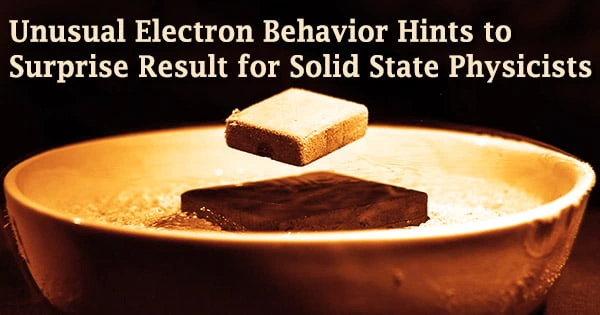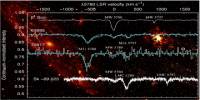Researchers at the University of Tokyo noticed an unusual signal related to the way electrons are grouped while examining the behavior of electrons in iron-based superconducting materials. The signal suggests a novel arrangement of electrons known as a nematicity wave, which the researchers want to further understand with the help of theoretical physicists. The nematicity wave might aid researchers in better understanding how electrons interact in superconductors.
Physicists have been looking for materials with progressively greater superconducting transition temperatures since the discovery of high-temperature superconductivity in 1986. However, the lack of a coherent theory to explain the phenomena has impeded their efforts.
Solid-state physicists have long desired to completely comprehend superconductivity, which is essentially electrical conduction without the resistance that generates heat and drains electricity. It is already being utilized on Japan’s experimental magnetic levitation bullet train, which might bring in a whole new world of very efficient or powerful equipment.
However, there is a lot to learn about this complicated subject, and it frequently shocks researchers with unexpected findings and observations. Professor Shik Shin of the University of Tokyo’s Institute for Solid State Physics and his colleagues investigate how electrons behave in iron-based superconducting materials, or IBSCs. These materials have a lot of potential since they might perform at greater temperatures than conventional superconducting materials, which is a big plus.
They also employ less exotic material components, making them easier to work with and less expensive. The material must be chilled to hundreds of degrees below zero to activate a sample’s superconducting capabilities. During the cooling process, interesting things happen.
“As IBSCs cool down to a certain level, they express a state we call electronic nematicity,” said Shin.
“Anisotropy occurs when the crystal lattice of a material and the electrons inside it appear to be structured differently depending on the angle from which they are seen. We expect the way electrons are arranged to be tightly coupled to the way the surrounding crystal lattice is arranged. But our recent observation shows something very different and actually quite surprising.”
The Bardeen-Cooper-Schrieffer hypothesis states that electrons travelling through a crystal lattice can experience collective motion mediated by lattice vibrations in typical superconductors. This allows electrons to form pairs, resulting in a superconducting state where current flows without resistance. However, this process is unable to account for the behavior of high-temperature superconductors (HTSs).
Shin and his colleagues observed their IBSC sample on a small scale using a technology they invented called laser-PEEM (photoemission electron microscopy). They were expecting to observe a repeating pattern every few nanometers (billionths of a meter). And, indeed, this pattern was seen in the crystal lattice.
However, the team was surprised to see that the electron pattern was repeating every few hundred nanometers instead. The discrepancy between the electron nematicity wave and the IBSC’s crystalline structure was surprising, and its consequences are currently being investigated.
However, the findings might pave the way for theoretical and experimental research into a basic aspect of superconductivity, namely how electrons form pairs at low temperatures. The development of high-temperature superconductivity may hinge on understanding this phenomenon. It’s crucial to understand how nematicity waves are linked.
“Next, I hope we can work with theoretical physicists to further our understanding of nematicity waves,” said Shin.
“We also wish to use laser-PEEM to study other related materials such as metal oxides like copper oxide. It may not always be obvious where the applications lie, but working on problems of fundamental physics really fascinates me.”















